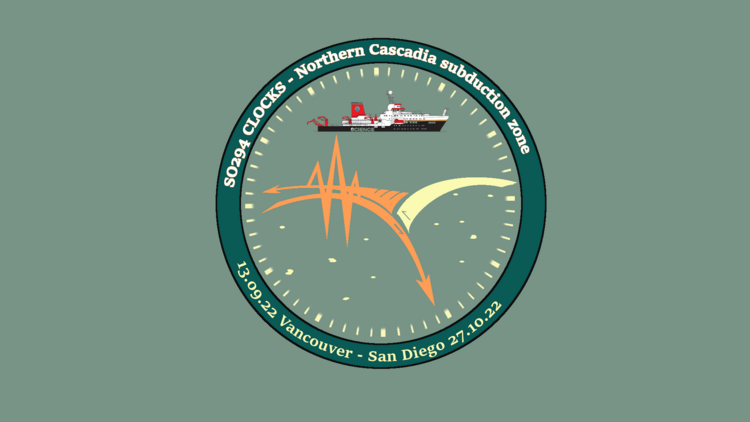Phone: +49 (0) 0431-600-2331
Email: mriedel@geomar.de
CLOCKS
Northern Cascadia: Extent of locked zone, prism deformation, slip-to-toe, and the edge of subduction
Great megathrust earthquakes (M>8.5) at subduction zones and their tsunamis are among the most damaging natural hazards. At Cascadia, a megathrust earthquake is expected to occur in the foreseeable future. Little is known on whether and how the seismogenic behavior of the megathrust changes along the Cascadia margin. The detailed structure of the accretionary prism, segmented deformation front, style of faulting and vergence of thrusts, as well as the up- and down-dip extent of the locked zone remain uncertain. Especially north of the Nootka Fault Zone, little is known about the presence and extent of a subducted slab and the megathrust potential of the Explorer Plate system. We propose to acquire seismic data to image the frontal prism of the Juan de Fuca and Explorer Plates to seek structural signatures of slip-to-toe in past earthquakes, as e.g. recognized during the 2011 Tohoku event. Heatflow data combined with seismic imaging will help to constrain the temperature regime across the deformation front to define the up-dip limit of the locked zone. A magnetotelluric
experiment will address the down-dip end of the locked zone. Work is leveraged through collaboration with the Geological Survey of Canada, Japan Agency of Marine-Earth Science & Technology, and Ocean Networks Canada.
Part of this projekt is cruise SO294: CLOCKS

Project-related publications
Douglas, K., Coté, M., Riedel, M., Podhorodeski, A. and Obana, K. (2024) 2023003PGC cruise report: northern Cascadia Subduction Zone international research expedition, offshore British Columbia. Geological Survey of Canada, Open File, 90072 . Natural Resources Canada, 124 pp. ISBN ISBN 978-0-660-69064-3 DOI 10.4095/332361.
Riedel, M. and all Cruise Participants (2022) CLOCKS: Northern Cascadia: Extent of locked zone, prism deformation, slip-to-toe, and the edge of subduction, and CASCADIA CO2: Seismic multi-parameter study at a possible site for CO2 storage in basalt in the Cascadia Basin utilizing shear wave events (secondary user), Cruise No. SO294, 13.09. 2022 - 27.10. 2022, Vancouver (Canada) - Port Hueneme (USA), CLOCKS & CCO2. SONNE-Berichte, SO294 . UNSPECIFIED, Bonn, 150 pp. DOI 10.48433/cr_so294.
Riedel, M., Bialas, J., Klein, E., Papenberg, C. and Berndt, J. (2024) Technical Report for Raw 2D MCS Reflection Data, R/V Sonne Cruise 294, Vancouver (Canada) – Port Hueneme (USA), 13/09/22 – 27/10/23. GEOMAR Helmholtz Centre for Ocean Research, Kiel, Germany, 37 pp. DOI 10.3289/TR_2D-MCS_SO294.
Kehew, J., Douglas, K., Riedel, M., Klaucke, I., Norgard, T., Du Preez, C., Li, Z., and Stacey, C., 2023. Swiftsure Bank water column survey SO294, offshore British Columbia; Geological Survey of Canada, Open File 8943, 1 .zip file. https://doi.org/10.4095/331402


